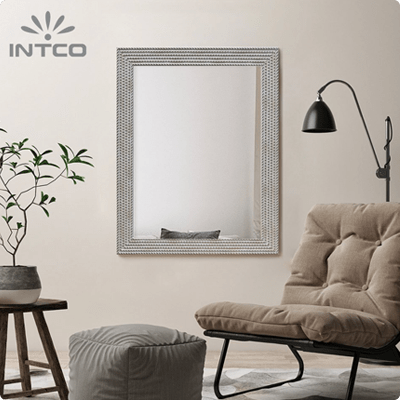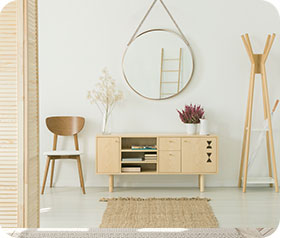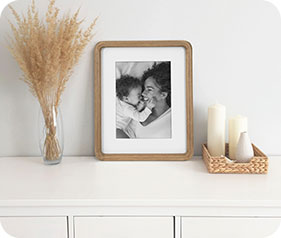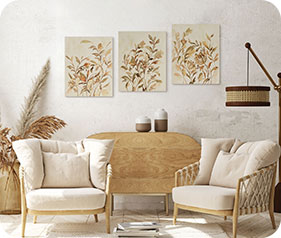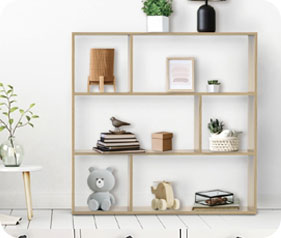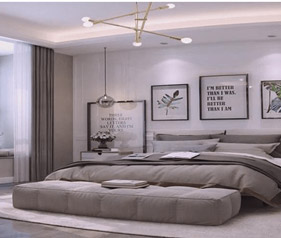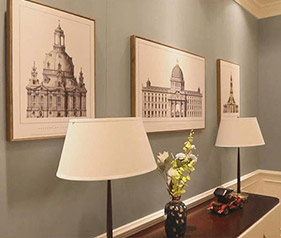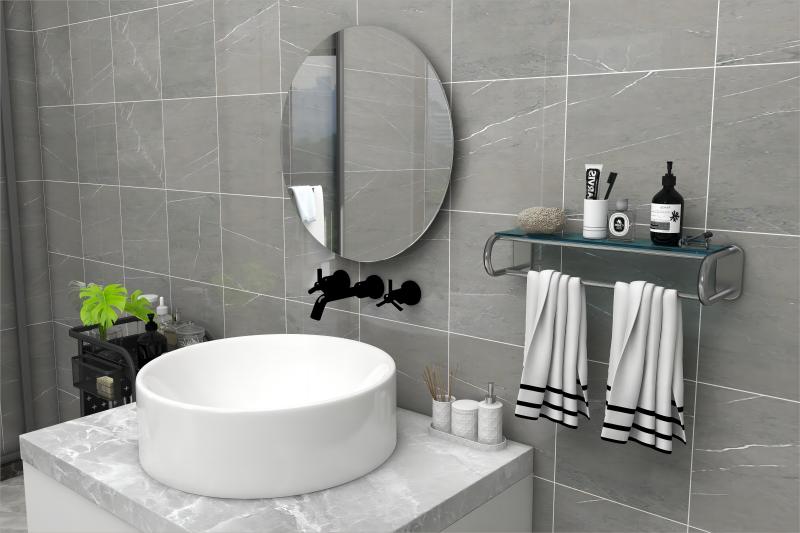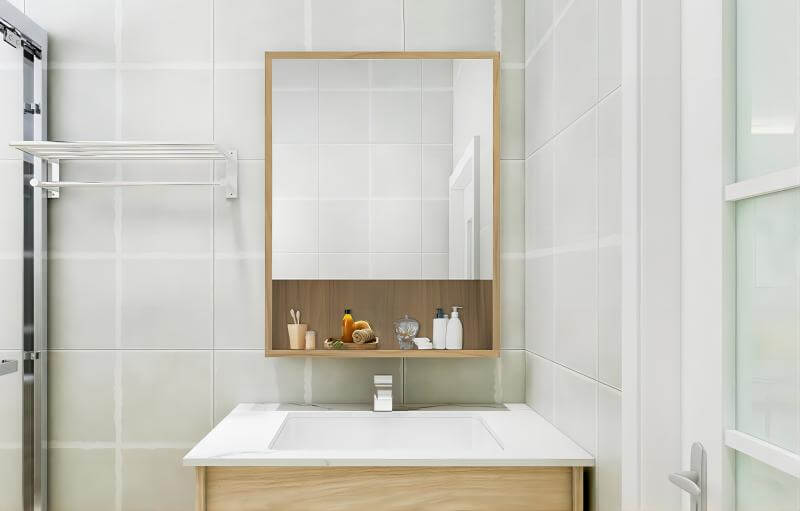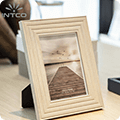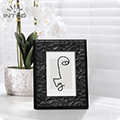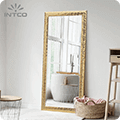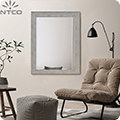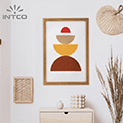The Importance of mirror thickness in Interior Design
mirrors are often underestimated in the mirror design of interiors, especially bedrooms, although they significantly affect both the aesthetics and the room’s functionality. The thickness of a mirror is a key factor that determines the ambiance of the entire room. Different thickness levels define the mirror’s appearance, and the impact it creates for other spaces. Therefore, knowledge of mirror thickness is crucial for every designer who desires to develop harmonious and visually appealing designs.
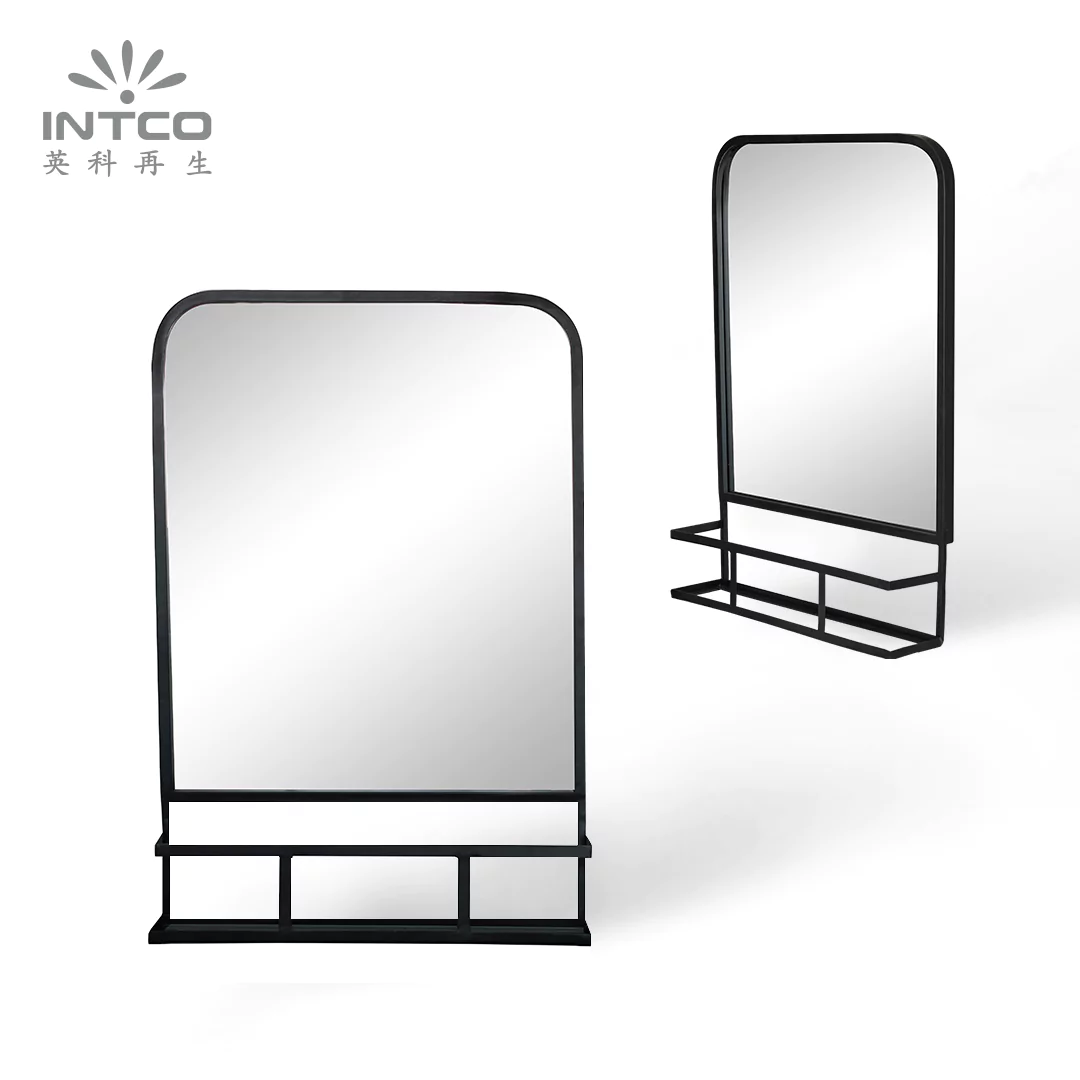
The Role of mirrors in Enhancing Bedroom Aesthetics
mirrors are widely used in bedroom mirror design for several purposes they serve. They are used to reflect the light from outside and complement the illumination of the space. Their use helps make rooms look bigger than they are by reflecting space in the mirror. Besides, depending on the design, they can change the mood of a room, creating comfort and relaxation for bedrooms. Their thickness and placement also serve as factors affecting their presence in a specific room. Moreover, a mirror chosen wisely can become a beneficial element varying the thickness and serving as a focal point and piece of decoration.
The Connection Between mirror thickness and Perceived Spaciousness
The thickness of a mirror can have a huge impact on how big a bedroom looks. People are quick to act when buying mirrors yet the issue of thickness affects the perception of space. Thick mirrors accommodate more materials, thereby adding to the exposed content and directly reflecting on the thickness of the mirror. Thick mirrors add up thickness and positively influence a warm, cozy feel and thick mirrors mean the ability to accommodate most of the intended information. Thin mirrors reduce the open space of the room and easy to look at the mirror unnoticed, thick mirrors balance space and accommodate and get noticed immediately so that one sees the worth of items he or she placed there. Adjusting the thickness of the mirror can help to balance space in the bedroom and allow the use of space balancing.
Considerations When Choosing mirror thickness for Different Designs
The designs can influence the thickness of the mirror in the bedroom. For modern designs better will be slim mirrors that could enhance the cleanness of the room and concentration on the space. For traditional designs, the larger thickness will make the mirrors play a large role and add some richness. Installation should be taken into account as well since thicker mirrors should have more supportive elements to avoid following.
Reflective Surfaces and Bedroom Dimensions
If we talk about the general specifics of mirrors, the given sample is traditionally accepted to be thicker. In detail, it can be truly beneficial to utilize their power and functional properties. First of all, it should be noticed that the thickness of the mirror is closely connected to its depth, and the given property is important in changing people’s perceptions of space and light. This is why this type of mirror can be viewed as a powerful tool to define the bedroom’s dimensions. I believe that such mirrors could be thicker than the sample because they could provide a more powerful effect on the rooms’ perception while being objects that cannot be used for the reflection of different objects. It is possible to assume that these mirrors are more statement thinners used to be the sediments of the reflection along with the functional side of the issue.
How mirror Depth Influences Room Appearance
The shallow-depth mirrors should be a big no in the living room. This is because they will not serve the purpose that the mirrors are usually bought for. It will not last for a long time, the purpose of getting a mirror in the living is usually because one wants it to perform certain roles which can be styling up the area, giving it a bigger and better look. If one installs the best of lighting solutions, the place will look better and appear to be a new space where one can hold their retreat or solitude at.
Creating a Balanced Look with Optimal Thickness
The solution to often finding it hard to achieve balance between different decorative features in a bedroom often lies in the choice of the correct thickness of a mirror installed in the room. If too thick, the mirror becomes domineering and draws itself too much attention away from other, also important, decorative features, if too thin it can become insignificant and virtually unnoticeable. In between, the correct thickness changes the role of the mirror from featuring as one of the main elements of bedroom mirror design to playing the role of an accessory linking up other elements in ways that we perceive as fitting.
Practical Benefits of Various mirror thicknesses in Bedrooms
Apart from aesthetics, the practical benefits of mirrors having various thicknesses in bedrooms are also critical to both designers and homeowners. In this phase, designers must make a number of functional and design-related considerations. Different thickness benefits and concerns tied to practicality can be useful in the decision-making process in the designing phase.
Enhancing Visual Depth and Dimension
Various mirror thicknesses affect the depth and dimension of the visual impact. Heavier, thicker mirrors create a three-dimensional feel and add layers of visual space to affect comfort and luxury with their solidi ties. Space in a bedroom environment is at a premium, but using mirrors so that the space is always inviting rather than burdensome can offer a sense of expansiveness.
Optimizing Natural Light Reflection for Better Ambiance
Moreover, another aspect that goes hand in hand with how the thickness of the mirror affects the atmosphere in the bedroom is the natural light reflection. With thicker mirrors, designers can be sure that natural light is not only reflected but can also be dispersed most effectively. Thus, mirror design experts can control the light reflexion to create a wonderful environment. Additionally, since it is the best thickness that allows for the perfect light interaction with the surfaces, the QL is tranquil.
Achieving the Desired Aesthetic with Appropriate Thickness
Finally, the implementation of the appropriate thickness of a mirror is crucial to the required visual effect in a bedroom. It should be chosen with regard to the mirror design theme and the purpose of the selected space. Whether working on modern minimalism or a romantic atmosphere, it is pivotal to recognize that the facilitation of the desired effect directly depends on the implemented thickness of the applied items. Designers should consider the alignment of the surface thickness with the stylistic and location peculiarities of the room. Only in this case, the effect will look complete and polished.
Leveraging mirror Effects to Elevate Bedroom Interiors
Placements of mirrors of different thicknesses can play a huge role in influencing the perceived dimensions of the bedroom. Thicker mirrors often make bolder statements and add depth to the room without actually designing anything. For instance, when placed in strategic locations, they can break the monotonous walls of space by dividing the room into areas. This not only creates a sense of splitting up the room but also encourages others to look all around and makes the room appear that much larger. On the other hand, a thinner mirror is less likely to alter the visual mirror design in any spectacular fashion. However, like thicker mirrors, if it is also placed correctly, a narrow mirror can be used to visually add depth to the room. The carefully selected depth creates a visual narrative within the context of the decorating of the bedroom to make it seem like it extends on for much farther than it does.
Improving Mood and Atmosphere Through Reflectance
From the standpoint of manipulating light, mirrors can play a critical role in determining the emotional content of a bedroom. Generally speaking, glossy or wet-looking materials have a specific emotional value, as they seem more like living surfaces and less like forms to be touched. Although they have a cold appearance, thick mirrors with an expensive reflected layer reflect more light, creating a dynamic play of light and shadow. It brings more light into the area and positively affects its luminous characteristics, making space seem more vibrant. Generally speaking, light is diffused more smoothly by thinner mirrors, creating a relaxing mood. Thus, thickness is another factor that affects how light is reflected.
Integrating mirrors Seamlessly into Your mirror design Scheme
When it comes to maximizing the visual appeal of mirrors in the bedroom design, it is crucial to allow them to blend in the mirror design smoothly. For instance, concerns regarding the thickness of the chosen mirror allow for making the mirror in question either an integral part of the general mirror design or a unique feature that stands out. For example, a thicker mirror’s heaviness and symmetry make it an accent while the thinner version looks like a part of the foray of the other minor elements throughout the room. Thus, the need to make the mirror in question thicker or thinner provides the premise for deciding where it will be placed and how it will narrate the mirror design of the room. A properly chosen mirror allows for emphasizing the elements, with which it will be associated, thus creating balance and symmetry in the description of the room.
Additionally, it should be noted that the optimization of the thickness of mirrors is an art that demands an understanding how room size, the purpose of the design, and thickness are interrelated. By considering all these factors, we mirror design the spaces and add harmony to the overall interior by choosing the correct thickness. Quality introductions can be used to succeed in this endeavor to optimize thickness and make the bedroom setting more appealing to guests.
Choosing the Right mirror thickness
As for how to choose mirror thickness for bedroom design, there are various considerations to keep in mind. Firstly, the size of the room is crucial; whereas smaller spaces can be made to look bigger with thinner mirrors, larger bedrooms would typically benefit from thicker panes serving as a focal point. Secondly, the stylistic possibilities should be considered. For example, modern, minimalist designs may benefit from thinner mirrors that make a room appear more spacious. On the other hand, traditional interior designs can be complemented with thicker mirrors designed to bolster the visual weight of richer textures and ornate finishing touches. Lastly, the intended use should guide the choice of mirror thickness; thicker mirrors are generally more sturdy and should be used when the homeowner expects to rely on the mirror for practical applications such as dressing up or makeup.
Expert Advice on Balancing Aesthetics and Practicality
Adequate bedroom furniture mirror design is a matter of both aesthetic value and utility, and this balance is something that is often noted by professional interior designers. While designing a mirror relative to the overall atmosphere of the room, it is crucial to consider the thickness of the bedroom mirror. Thicker variants of mirrors can make people pay attention to them, making them a good place to start their work. However, when not matching the mirror design considerations of the room, such mirrors can make it feel small and narrow. Thinner mirrors are not suitable for such a task, though, as they do not put as much pressure on the viewer – lacking the necessary presence when the room is large. Proper balance can often combine already available furniture and make it compatible with the selected thickness of a mirror. Consulting with professional designers can streamline the process and provide recommendations that would be perfect for your ideal sleeping chamber.

Intco: Your Unfailing Choice
If you are looking to purchase a mirror for your bedroom, consider choosing one that is produced by Intco. This option features numerous benefits since the company is well-known for producing high-quality products. It provides a wide variety of options, meaning that people could choose a solution that corresponds to their mirror design and physical needs. The focus on both durability and appearance ensures that the item would serve its function and enhance the beauty of the bedroom. Intco’s commitment to sustainability and inattentiveness guarantees that people that their product would be able to create the perfect ambiance in their room.
-
Press Release Jan 29, 2024
-
Inspiration Jan 29, 2024
-
Industry News Jan 29, 2024
